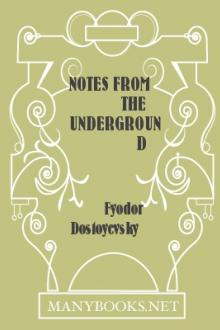Ancient America, in Notes on American Archaeology by John D. Baldwin (best ebook reader ubuntu .txt) 📖

- Author: John D. Baldwin
- Performer: -
Book online «Ancient America, in Notes on American Archaeology by John D. Baldwin (best ebook reader ubuntu .txt) 📖». Author John D. Baldwin
“It is a nude figure, of silver, two inches and a half in height, on a flat, pointed pedestal. In the right hand it has the mask of a human face, but in the left a tube over half an inch in length, the narrow part placed to the left eye in a diagonal position, as if observing some celestial object. This is the first specimen of a figure in the act of looking through a hollow tube directed to the heavens that has been found in the New World. We can not suppose the Peruvians had any thing that more nearly resembled a telescope. It was found in a chulpa, or ancient Indian tomb, at Caquingora, near Corocoro (lat. 17° 15' S., and long. 68° 35' W.), in Bolivia.” He forgets the astronomical monument described by Captain Dupaix.
The art of writing in alphabetical characters, so far as appears, was unknown to the Peruvians in the time of the Incas. No Peruvian books existed at that time, and no inscriptions have been found in any of the ruins. They had a method of recording events, keeping accounts, and making reports to the government by means of the quippu. This was made of cords of twisted wool fastened to a base prepared for the purpose. These cords were of various sizes and colors, and every size and color had its meaning. The record was made by means of an elaborate system of knots and artificial intertwinings. The amautas were carefully educated to the business of understanding and using the quippus, and “this science was so much perfected that those skilled in it attained the art of recording historical events, laws, and decrees, so as to transmit to their descendants the most striking events of the empire; thus the quippus could supply the place of documents.” Each quippu was a book full of information for those who could read it.
Among the amautas memory was educated to retain and transmit to posterity songs, historical narratives, and long historical poems. It is said, also, that tragedies and comedies were composed and preserved in this way, and that dramatic performances were among the regular entertainments encouraged and supported by the Incas. Whether the art of writing ever existed in the country can not now be determined. Some of the Peruvian tongues had names for paper; the people knew that a kind of paper or parchment could be made of plantain leaves, and, according to Montesinos, writing and books were common in the older times, that is to say, in ages long previous to the Incas. He explains how the art was lost, as I shall presently show.
It is not improbable that a kind of hieroglyphical writing existed in some of the Peruvian communities, especially among the Aymaraes. Humboldt mentions books of hieroglyphical writing found among the Panoes, on the River Ucayali, which were “bundles of their paper resembling our volumes in quarto.” A Franciscan missionary found an old man sitting at the foot of a palm-tree and reading one of these books to several young persons. The Franciscan was told that the writing “contained hidden things which no stranger ought to know.” It was seen that the pages of the book were “covered with figures of men, animals, and isolated characters, deemed hieroglyphical, and arranged in lines with order and symmetry.” The Panoes said these books “were transmitted to them by their ancestors, and had relation to wanderings and ancient wars.” There is similar writing on a prepared llama skin found among other antiquities on a peninsula in Lake Titicaca, which is now in the museum at La Paz, Bolivia. It appears to be a record of atrocities perpetrated by the Spaniards at the time of the Conquest, and shows that some of the Aymaraes could at that time write hieroglyphics.
XI.PERUVIAN ANCIENT HISTORY.
The Peruvians, like most other important peoples in all ages, had mythical wonder-stories instead of authentic ancient history to explain the origin of their nation. These were told in traditions and legends preserved and transmitted from generation to generation by the amautas. If they were also recorded in secret books of hieroglyphical writing, such as those found among the Panoes on the Ucayali, which “contained hidden things that no stranger ought to know,” satisfactory evidence of the fact has never been brought to light. In addition to these, they had many historical traditions of much more importance, related in long poems and preserved in the same way; and there were annals and national documents recorded in the quippus.
Some of the Spanish writers on Peru, who described what they saw in the country at the time of the Conquest, discussed its history. If they had used the proper sources of information with a more penetrating and complete investigation, and studied the subject as it might have been studied at that time, their historical sketches would now have great value. The two most important works written at this time, the “Relacion” of Sarmiento and the “Relaciones” of Polo de Ondegardo, were never printed. But none of these writers sought to study Peruvian antiquity beyond the period of the Incas, although some of them (Acosta for instance) inquired sufficiently to see that Manco Capac was a mythical personage prefixed to the dynastic line of the Incas without actually belonging to it. This limited view of the ancient history, which was inconsistent with what could be seen in the antiquities and traditions of the country, was generally accepted, because nothing more could be known in Europe, and its influence was established by the undue importance accorded to the “Commentarios Reales” of Garcilasso de la Vega, published in 1609.
GARCILASSO’S HISTORY.Garcilasso de la Vega, the son of a distinguished Spaniard of the same name, was born at Cuzco in 1540. His mother, named Ñusta, was a niece of the great Inca Huayna Capac, and granddaughter of his no less eminent predecessor, Tupac Yupanqui. The intimate blood relationship which connected him with the Incas naturally drew attention to his work, and, with more haste than reason, was treated as the best possible qualification for writing Peruvian history; therefore his “Commentarios” acquired a very great celebrity, and came to be regarded as the highest authority on all questions relating to Peru previous to the Conquest. The work never deserved this reputation, although it was not without value as an addition to what had been written on the subject by Spaniards. Garcilasso was not well qualified to write a faithful history of Peru either by his knowledge or by the temper of his mind. His aim was to glorify the Incas and their times, and much of his work was in the strain of tales heard in childhood from his mother.
The “Commentarios Reales” were written just as their author’s training had prepared him to write them. He lived in Cuzco without education until he was nearly twenty years old, his intellectual development being confined to the instruction necessary to make him a good Catholic. He then went to Spain and never returned to Peru. The next period of his life was devoted to seeking distinction in the Spanish military service; but political influence was against him, and he could not attain the object of his ambition. He finally retired to Cordova, acquired some literary culture, and resolved to win distinction by writing a history of his native country. His materials for such a history, in addition to what could be learned from the earlier Spanish writers, consisted entirely of what he had learned of his mother and his early Peruvian associates at Cuzco, and of such acquisitions as could be gained by means of correspondence with his acquaintances in Peru, after the purpose to write a history was formed. It can be seen readily that Garcilasso’s history written in this way might have a certain value, while it could not be safely accepted as an authority. The first part of his work was published in 1609, when he was nearly seventy years old.
According to his version of the Peruvian annals, the rule of the Incas began with the mythical Manco Capac, and lasted over five hundred years; and this version, with some variations in estimates of the time, has been repeated ever since. The dynastic line of the Incas thus determined is given in the work of Rivero and Von Tschudi as follows:
1. Manco-Capac, mysterious “son of the sun,” who began to reign in 1021 A.D., and died in 1062, having reigned forty years. 2. Sinchi-Rocca, who reigned thirty years, from 1062 to 1091. 3. Lloque-Yupanqui, reigned thirty-five years, from 1091 to 1126. 4. Mayta-Capac, thirty years, from 1126 to 1156. 5. Capac-Yupanqui, forty-one years, from 1156 to 1197. 6. Inca Rocca, fifty-one years, from 1197 to 1249. 7. Yahuar-Capac, forty years, from 1249 to 1289. 8. Viracocha, fifty-one years, from 1289 to 1340; his son Inca Urco reigned after him eleven days, and was then deposed “as a fool incapable of governing.” 9. Titu-Manco-Capac-Pachacutec, sixty years, from 1340 to 1400, living, says tradition, to be one hundred and three years old. 10. Yupanqui, thirty-nine years, from 1400 to 1439. 11. Tupac-Yupanqui (Garcilasso’s great-grandfather) thirty-six years, from 1439 to 1475. 12. Huayna-Capac, “the most glorious of the Incas,” fifty years, from 1475 to 1525. After his death the empire was divided between his two sons Huascar and Atahuallpa. This caused a civil war, which ended with the death of Huascar in 1532. One year later Atahuallpa was himself destroyed by Cortez.
Manco-Capac, here set down as the first Inca, with a marvelous story of his mysterious origin and his miraculous powers as a civilizer, was undoubtedly borrowed from traditions of the origin of civilization in the more ancient times, which had been used by the Incas in support of their claim to direct descent from the sun. In reality, the first Inca was Rocca, or Sinchi-Rocca, and several of the early Spanish writers were sufficiently well informed to see this. The period of the Incas must have been less than five hundred years if their dynasty consisted of no more than twelve or thirteen sovereigns. In other respects, this table of the sovereigns may be substantially correct, for there is a general agreement in regard to the names and the order of succession, although Montesinos maintains that the fifth Inca on the list was borrowed by Garcilasso from traditions of a much more ancient sovereign who was greatly celebrated in the historical poems, or confounded with him. The period of the Incas was very distinct in Peruvian history, but it is now understood that they represent only the last period in the history of a civilization which began much farther back in the past.
FERNANDO MONTESINOS.The only Spanish writer who really studied the ancient history of Peru in the traditional and other records of the country was Fernando Montesinos, who went there about a century after the Conquest. He was sent from Spain on service which took him to every part of Peru, and gave him the best possible opportunities for investigation. He was a scholar and a worker, with a strong inclination to such studies, and,





Comments (0)